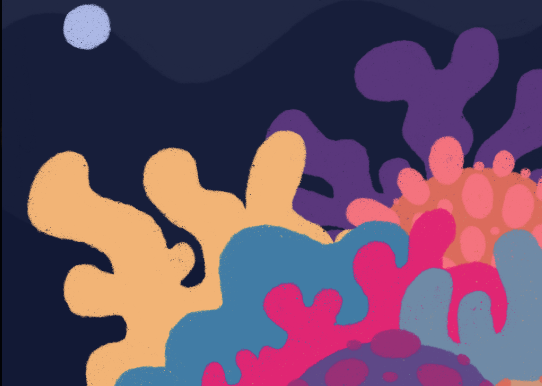Examining the slippery fate of coral reefs

Coral reefs are essential for ocean health and biodiversity.
January 17, 2023
Below the surface of the beautiful tropical waters, numerous creatures can be found. Coral reefs have a substantial impact on the Earth and its organisms and also harbor the highest biodiversity of any ecosystem globally, but they are in a lot of danger. Coral reefs get their vibrant color from algae.
“When the algae become stressed due to poor water conditions, they leave the corals. This causes the corals to turn white. If the conditions continue this way, the coral will die,” Environmental Science teacher Mrs. Stacey Boccher said. This dilemma is described by scientists as coral bleaching.
The death of coral reefs would be catastrophic to the oceans. “Coral reefs provide support, protection, shelter and food for many organisms. Without coral reefs, species of fish and marine invertebrates lose their habitat. Without habitat, they would start to decline in numbers as well,” Wildlife Biology teacher Ms. Renee Harmon said.
A loss in ocean organisms will impact food chains all throughout the world. A prime example is the potential loss of the Great Barrier reef, found on the east coast of Australia. The Great Barrier reef provides food and habitat for about 25 percent of the world’s fish and are expected to die by 2050. In 28 years, 25 percent of the ocean’s animals will lose their food and shelter. Sadly, this results in an enormous decrease in ocean animals and interruption of food chains.
Uncovering the cause of coral bleeching is a bit of a slippery slope. Overall, climate change and the burning fossil fuels have been found responsible. The ocean is heated by an increase of ultraviolet rays that penetrate through the ozone layer. The ozone layer is a blanket-like layer of Earth’s atmosphere to shield us from the sun’s harmful ultraviolet rays. The burning of fossil fuels thins and damages the ozone layer. With a thin ozone layer, the sun’s UV rays penetrate the atmosphere and heat up the oceans.
“A temperature increase as little as two degrees fahrenheit warms our oceans, creating hazardous conditions for the algae,” Mrs. Boccher said.
When the algae leaves, the corals lose their color and nutrient supply. “When I snorkeled in a coral reef in Costa Rica, I thought I was going to see bright colors like in the movies. I was disappointed to see mainly white corals,” junior Hailey Welter said.
However, there are additional reasons the coral reefs are dying. Toxic sunscreen, oil spills from ships and exhaust from boats can poison the coral reefs.
But the reef’s future is not set in stone. There is still hope for them, and small acts by humans such as using reef safe sunscreen, reducing litter waste and ensuring that commercial boats are up to date can limit the amount of toxins in the waters. The world as a whole can work together to stop burning fossil fuels and releasing greenhouse gasses to the ozone layer. “We can do it, we just need to work together,” Mrs. Boccher said.


